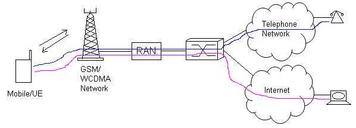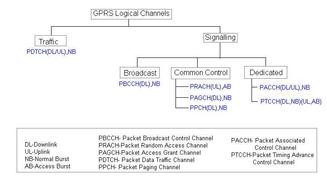
15 GSM Interview Questions and Answers
Ace your GSM job interview with these 15 commonly asked questions and detailed answers covering call flows, frame structure, channel types, and more.
Showing 25 posts (Page 1 of 5)
Advertisement

Ace your GSM job interview with these 15 commonly asked questions and detailed answers covering call flows, frame structure, channel types, and more.

Explore the 2G GSM call flow, detailing network entry procedures, authentication, and call setup between mobile devices and base stations. Includes a call flow diagram.

Explore 2G GSM network interfaces: Um, A, Abis, and Asub. Learn how these interfaces connect key network elements like BTS, BSC, and MSC for seamless communication.

Explore the fundamentals of Adaptive Multi-Rate (AMR) technology in GSM, including codec modes, operation, and channel coding for optimized voice quality.
Explore AMR conformance testing, loopback procedures, and key specifications for GSM devices. Understand tests for speech channels, bad frames, sensitivity, and more.

A comparison of baseband and synthesized frequency hopping in GSM, covering their implementation and key differences.
Explore Bit Error Probability (BEP) in GSM/GPRS/EDGE networks, its calculation, and the derived parameters like CV_BEP and MEAN_BEP used for assessing radio link quality.

Explanation of cell re-selection in WCDMA/GSM networks, including trigger conditions, neighbor cell measurements, and the process of switching between WCDMA and GSM cells.

Explore cellular frequencies used in GSM, CDMA, UMTS, and LTE networks, with a focus on frequency bands in the USA and Europe.

Explore cellular IoT kit vendors for GSM, LTE, 5G, LoRaWAN, and NB-IoT. Find manufacturers, benefits, and features of cellular IoT development kits.

Explore the differences between circuit-switched and packet-switched calls. Understand how they work, their best applications, and call flow examples for GSM and WCDMA networks.

Explore GPRS, a packet-switched technology for data connections over GSM networks. Learn about its architecture, frame structure, channels, and more.
Explanation of the relationship between reported CV_BEP levels and the corresponding ranges of actual CV_BEP values. Includes a mapping table.

Explore the benefits and drawbacks of EC-GSM (Extended Coverage GSM) for IoT, including battery life, cost, security, and coverage, along with its limitations.
Explore frequency error measurement in GSM, its importance for signal quality, interference prevention, network synchronization, and compliance with GSM standards.

Explore the GPRS protocol stack, detailing the functions of Layer 1, Layer 2, and Layer 3, including SM, GMM, SNDCP, LLC, RLC, MAC, and the physical layer.
Explore key terms related to GPRS (General Packet Radio Service), including frame structure, network nodes (SGSN, GGSN), coding schemes, interfaces, and related concepts.
Explore the key features and advantages of GPRS (General Packet Radio Service) in mobile data communication. Learn how it enhances GSM networks.

Learn about the GSM Access Grant Channel (AGCH), a downlink channel used to grant or deny network access and provide Traffic Channel (TCH) information.

Explore GSM and GPRS Radio Resource Control (RRC) state diagrams, including idle, dedicated, standby, and ready states. Learn how mobile devices transition between states for efficient network communication and resource management.

Explore the GSM (2G) architecture, including Mobile Station, Base Station Subsystem, and Network Switching Subsystem, with detailed diagrams and explanations.

Convert GSM ARFCN (Absolute Radio Frequency Channel Number) to its corresponding uplink and downlink frequencies in MHz. Simplifies RF frequency planning and maintenance.
Convert GSM ARFCN values to corresponding uplink and downlink frequencies using our calculator. Understand the ARFCN to frequency relationship across GSM bands.

Learn about the GSM Broadcast Control Channel (BCCH), its role in system information broadcasting, and how mobiles use it to access the GSM network.
Understand the GSM BTS Transceiver Power Class, covering maximum output power for different GSM bands including GSM-400, GSM-900, DCS-1800, and PCS-1900.
Advertisement